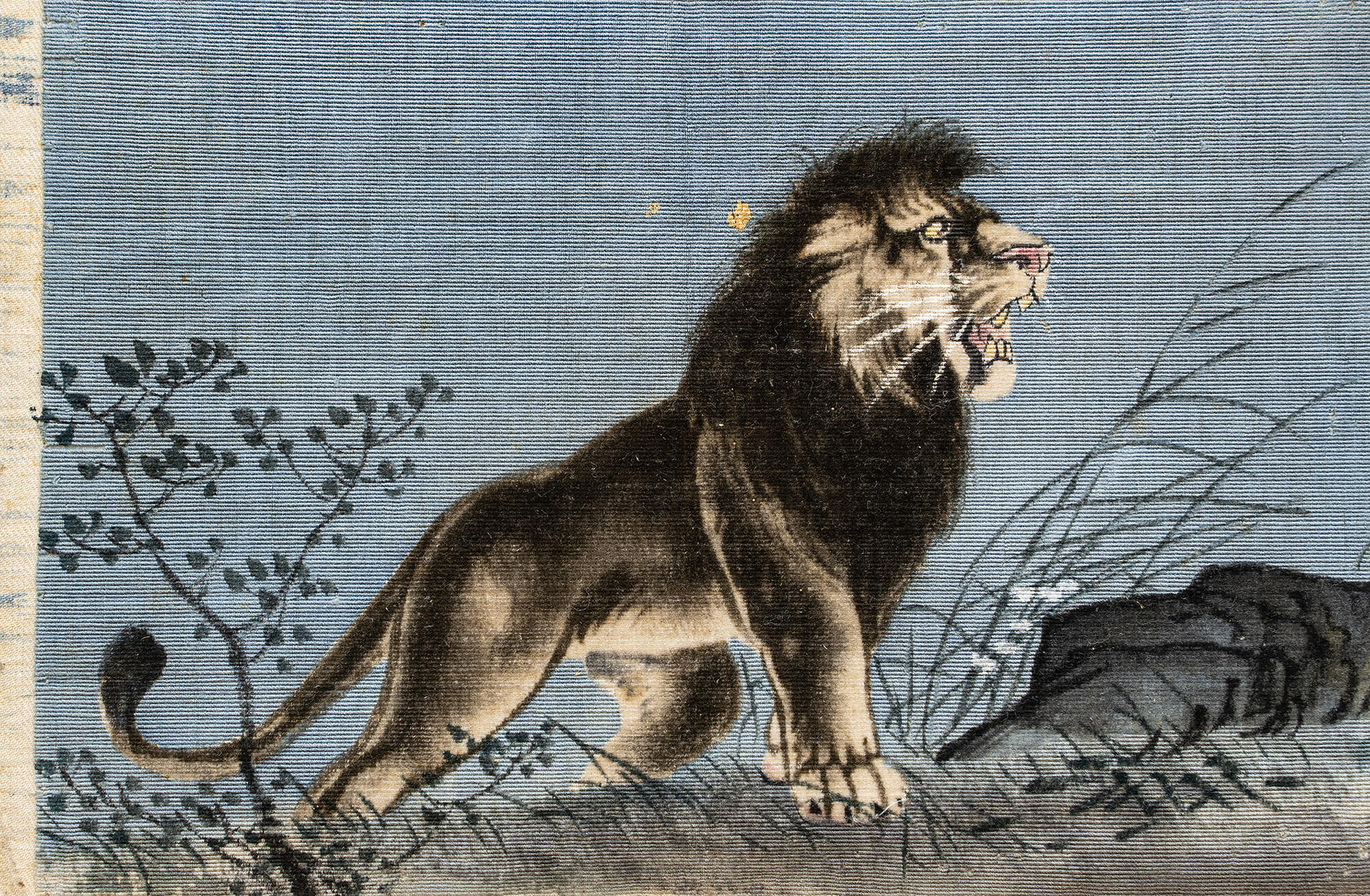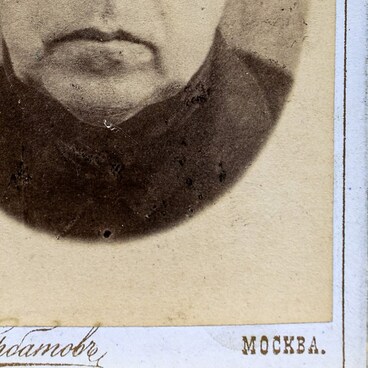The traditions of silk painting, as well as the production of silk itself, came to Russia from Asian countries. Silk paintings are created using two main techniques: cold or hot batik (the traditional technique of the Indonesians and Indians) or tempera painting.
Despite the high cost compared to drawing on paper, such products were very popular. Silk is very durable and does not fade, and its texture allows to achieve unusual color iridescences.
The presented exhibit from the “Khlebnikovs Collection” is made with a brush on a non-primed basis, on a silk fabric of tapestry weaving — a very durable and elastic base, ideal for drawing. The conventionality of the drawing is deceptive: the artist carefully painted the mane, claws, teeth and “whiskers” of the beast, depicting plants with precise strong brushstrokes.
In April 1916, Velimir Khlebnikov was dafted and served as a private in reserve infantry regiments stationed in Tsaritsyn (93rd regiment), and then in Saratov (90th regiment). Apparently, the poet did not participate in military operations, but even the barracks life was unbearable for him.
Comparing himself with Pushkin, who “found it difficult to be a varlet de chambre, ” Khlebnikov noted that it was even more challenging for him to be a 30-year-old recruit.
Having been bullied by the senior ranks, Velimir resisted in every way to be promoted to the rank of ensign and become one of the bullies. Tired of the cruelty and senselessness of what was happening, he submitted a report requesting to send him to the front, but it was denied. The February Revolution spared Khlebnikov from further service: having gone on a five-month leave to improve his health, he did not return.
The poet bought the “Lion” in Saratov and sent it to his parents as a symbolic portrait of himself, accompanied by a corresponding note.
Today, the drawing together with the note is
exhibited in the Khlebnikov House Museum in the “cartridge box”, which Velimir
brought from service to store manuscripts.



